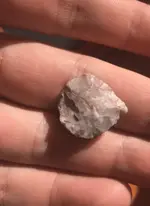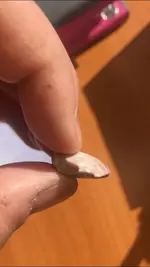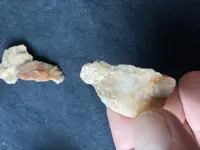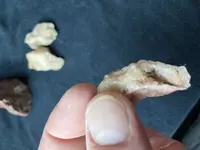GrouseMan
Jr. Member
- Joined
- Mar 2, 2020
- Messages
- 64
- Reaction score
- 154
- Golden Thread
- 0
- Primary Interest:
- All Treasure Hunting
The other day I posted a photo of a crystal quartz piece that I thought might be a scraper, and you guys seemed to have confirmed it. This got me thinking about another small piece of Briar Creek chert I found that has been clearly worked, I always chalked it up to being debitage, but upon further inspection the back edge is clean broken and the opposite edge is worked into a fine bevel. Found in South Carolina.


The artifact is about the size of a thumbnail, and now I'm not sure. It's hard to get a photo of the bevel, but opposite of the broken side it is worked down into a nice edge on both sides. Was this a scraper?
And more importantly, I wanted you guys to chime in with some "Scraper 101" knowledge. What are you looking for when identifying scrapers? I would not have been able to identify the crystal quartz piece as a true scraper if not for you guys and I still don't know what distinguishing features the piece has that makes it a scraper. So what are some of your Scraper Identification 101 tips?


The artifact is about the size of a thumbnail, and now I'm not sure. It's hard to get a photo of the bevel, but opposite of the broken side it is worked down into a nice edge on both sides. Was this a scraper?
And more importantly, I wanted you guys to chime in with some "Scraper 101" knowledge. What are you looking for when identifying scrapers? I would not have been able to identify the crystal quartz piece as a true scraper if not for you guys and I still don't know what distinguishing features the piece has that makes it a scraper. So what are some of your Scraper Identification 101 tips?
Upvote
0





